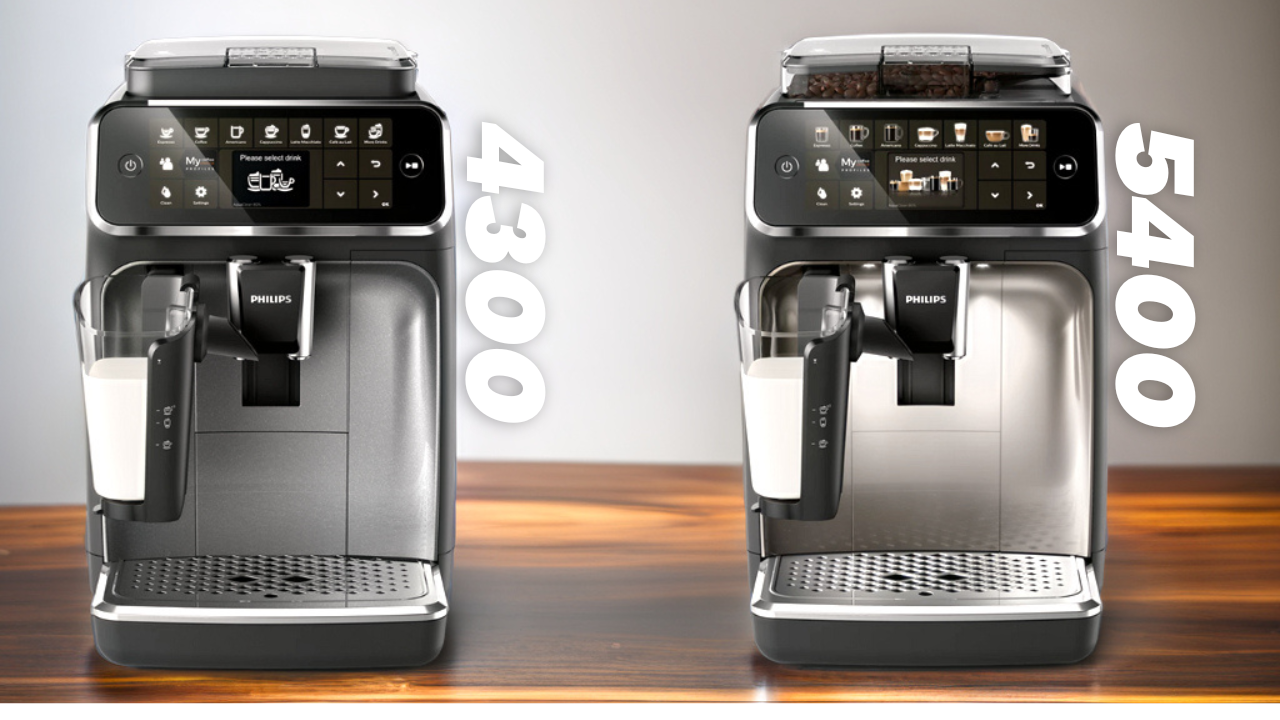Upgrade your coffee lifestyle with the Philips 4300 and 5400 superautomatic espresso machines. Priced at $1,000 and $1,100, respectively, these intelligent bean-to-cup coffee machines offer a luxe cafe experience without setting foot outside your home.
Whether you are searching for a more customized coffee or a wider selection of specialty coffees, the Philips 5400 and 4300 offer it all. Let’s compare the two espresso machines based on their functions, settings, performance, price, and customer reviews to lock in the better option.
Philips 4300: A Glance
The Philips Series 4300 is a powerful superautomatic espresso machine that ups the morning coffee routine with 5 delicious preset coffee varieties. Like its predecessors Series 2200 and 3200, 4300 is also available in the classic milk frother model (EP4321/54) and with LatteGo milk technology (EP4347/94).
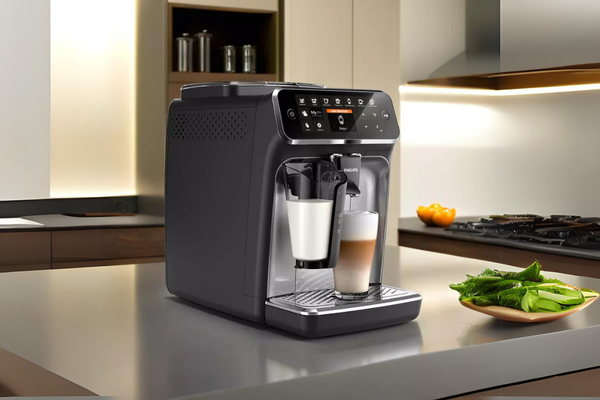
Besides the difference in their milk solutions, the two models are also distinct in the number of specialty coffees they can make through the automated settings. While the Philips 4300 – EP4321/54 gives you the option for 5 hot beverages, its upgraded model EP4347/94 allows you to make up to 8 kinds of coffees with a simple touch.
However, in this comparison blog, we will only discuss the features and specifications of the Philips 4300 – EP4321/54 in detail to understand the mechanism of the classic milk frother a little better. Philips 4300’s core features are a durable burr grinder, AquaClean water filter system, and an intelligent touch display.
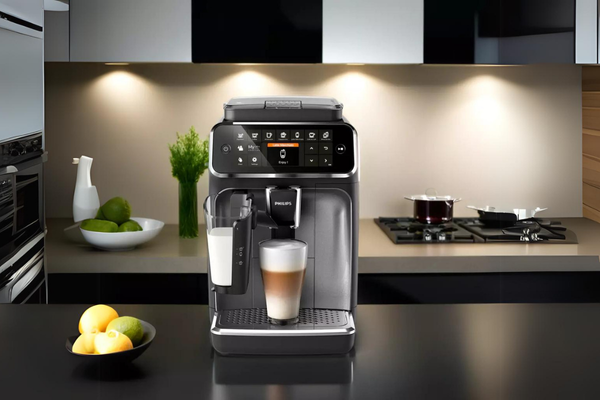
Philips 4300 LatteGo
Experience the perfect blend of convenience and quality with the Philips 4300 LatteGo. This automatic espresso machine delivers delicious, freshly ground coffee at the touch of a button
REASONS TO BUY
- 5 preset coffee varieties
- Costs less than $1,000
- User-friendly interface
- AquaClean water filter
- Automatic descaling
- 2 user profiles
REASONS TO AVOID
- Classic milk frother
- Limited availability
- The water tank may be leaky
Philips 5400: A Glance
Philips 5400 will be a game changer for those who can afford it. Priced at approximately $1,099.95, the Philips 5400 revolutionizes the coffee experience with its 12 specialty coffee settings. From Americano to cappuccino and latte macchiato to espresso lungo, you get it all with this powerful bean brewer!
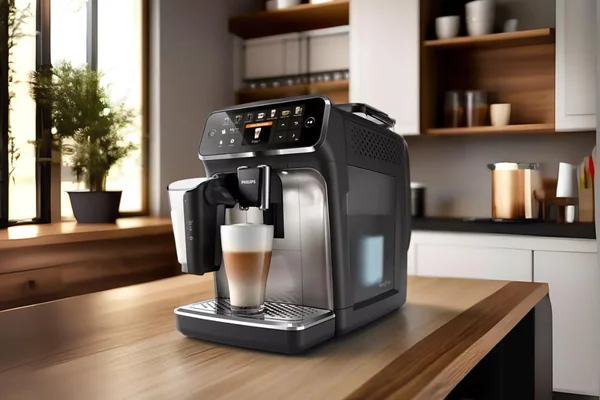
It must be noted that the Philips Series 5400 and its successor, Series 5500, are only available with the LatteGo milk frother. Hence, those who enjoy frothing milk in the classic barista style must settle for Series 4300 or older. While several models of 5400 are being sold in the US (all with the LatteGo milk technology), we will specifically discuss EP5447/94 and its features.
Besides its preset options for 12 coffee varieties, the coffee maker has a thin film transistor (TFT) touch display, a 4-profile coffee customizer, an AquaClean water filter system, a 12-step burr grinder, and more.

Philips 5400 LatteGo
Experience the perfect blend of convenience and quality with the Philips 4300 LatteGo. This automatic espresso machine delivers delicious, freshly ground coffee at the touch of a button
REASONS TO BUY
- Preset options for 12 specialty coffees
- TFT touch display
- LatteGo milk solution
- Sharp-edged burr grinder
- 4 user profiles
- Extra shot function
REASONS TO AVOID
- High price
- Limited stock
- Espresso quality and temperature may be below the expectations of some
Features and Specs Comparison – Philips 4300 vs 5400
The following side-by-side comparison table lists the technical specifications and features of Philips 4300 and 5400.
| Comparison | Philips Series 4300 | Philips Series 5400 |
|---|---|---|
| Type | Fully automatic | Fully automatic |
| Model No. | EP4321/54 | EP5447/94 |
| Retail Price | $999.99* | $1,099.95* |
| Dimensions | 246 x 371 x 433 mm | 246 x 371 x 433 mm |
| No. of Beverages | 5 | 12 |
| Grinder Settings | 12 | 12 |
| Temperature Settings | 3 | 3 |
| Water Tank Capacity | 1.8 litres | 1.8 litres |
| Coffee Bean Capacity | 275 grams | 275 grams |
| Material | Plastic | Plastic |
| Color | Glossy black | Chrome black |
| Weight | 7.5 Kg | 8.0 Kg |
| Display | Touch screen | Touch screen |
| Filter Compatibility | AquaClean | AquaClean |
| Milk Solution | Classic milk frother | LatteGo |
| Power Consumption | 1500 W | 1500 W |
| Pump Pressure | 15 bar | 15 bar |
| Coffee Powder Option | Yes | Yes |
| Double Cap | Yes | Yes |
| Milk Double Cap | No | No |
| Removable Brew Group | Yes | Yes |
| Aroma Seal | No | Yes |
| Guided Descaling | Yes | Yes |
| Service Warranty | 2 years | 2 years |
| Consumer Rating | 4.1 out of 5 stars | 4.5 out of 5 stars |
Coffee Roast Level, Flavor and Grinding
You can use any roast of coffee in the Philips 4300 and 5400 espresso machines, ranging from light to medium and medium to dark. The only exceptions are caramelized and flavored coffee beans.
The science behind this warning is that the extraction of flavoring oils during the brewing process can leave sticky residue on the grinder and components of the brew group, affecting their performance. Moreover, it makes the aftertaste of the coffee metallic or bitter.
You can add your chosen coffee beans to the burr grinder and twist the knob to select your preferred grinder setting out of the given 12. Place the lid back on to seal the aroma, and let the machines brew your perfect blend.

You can also use pre-ground coffee and pour the mixture into the small compartment next to the grinder. Again, close the lid and let the brew group prepare your coffee.
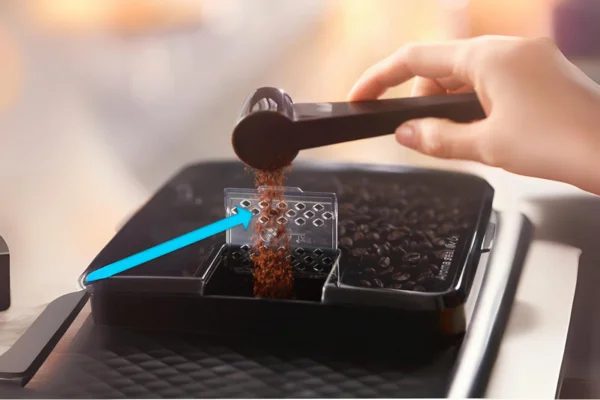
Functions and Settings
The Philips 4300 and 5400 include advanced settings compared to their older counterparts. Their intuitive touch displays have unique settings for coffee customization, such as adjustment buttons for the temperature and quantity of the coffee and the aroma strength. You can use the navigation icons ‘up’, ‘down’, and ‘back’ to personalize the coffee according to your liking.
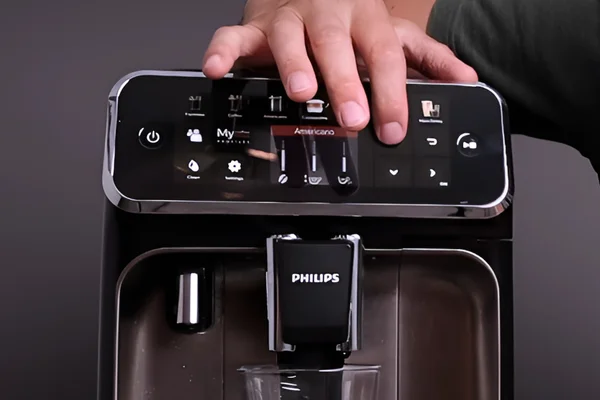
The Philips 4300 – EP4321/54 allows you to choose between 5 specialty coffees – espresso, Americano, regular coffee, caffe crema, and ristretto. Moreover, its ‘My Coffee Choice Profiles’ feature allows you to create two user profiles and save the preferences on the machine for everyday use. Other settings like the ‘clean’ button enable add-on functionality, e.g., automatic descaling.
In the case of the Philips 5400, you get 12 beverage options – the same five as the one above and cappuccino, latte macchiato, flat white, cafe au lait, caffe latte, espresso lungo, and travel mug coffee. Similarly, its ‘My Coffee Choice Profile’ settings are upgraded to four user profiles to accommodate more regular coffee drinkers in the house or office.
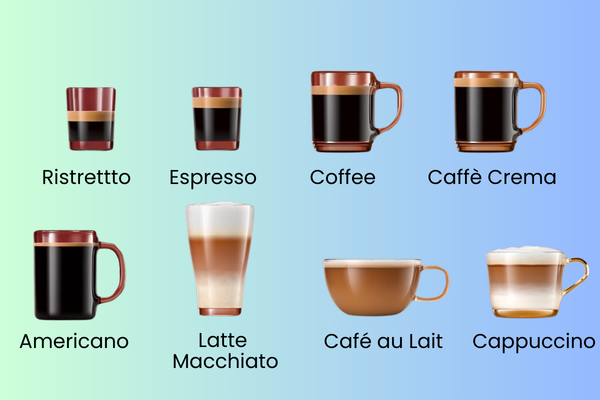
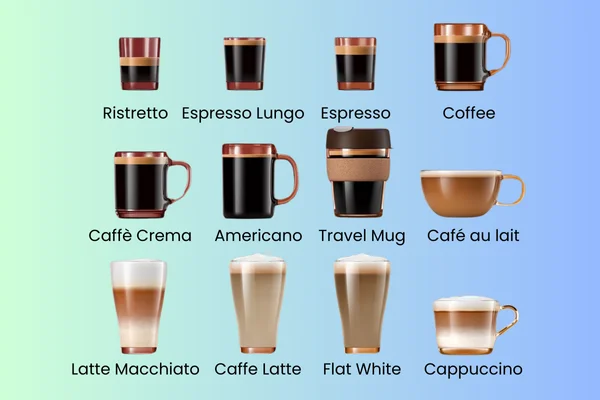
You can refer to the Philips 5400 and 4300 user manuals to explore and comprehend more functions and settings.
Milk Frothing
Black coffee is NOT everyone’s cup of coffee! Only 18% of the nation’s coffee consumers prefer drinking black coffee. The majority prefer to balance the bitterness with sweetened milk or creamer. With the Philips 4300 and 5400, you can create the perfect balance on the same sleek drip tray.
The Philips 4300 comes with a stainless steel steam wand, Classic Milk Frother, which heats and foams milk the traditional way. It jets out pressurized air into the milk, frothing it to the right texture. To do this, pour a generous quantity of milk into a stainless steel pitcher and dip the steam wand in it for frothing. You can pour the velvety, smooth, frothed milk into your espresso shots or Americano for an enriching experience.
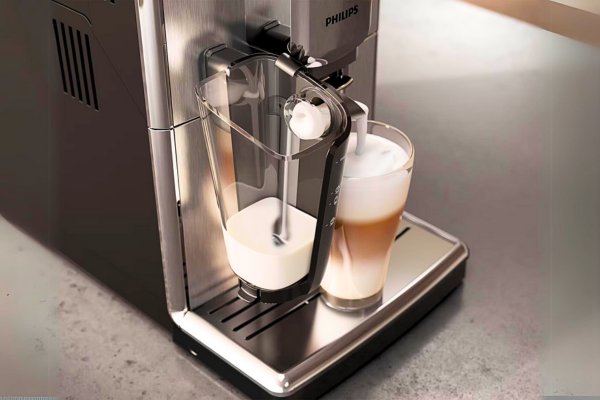
In contrast, the Philips 5400 makes things easy with its LatteGo technology. The advanced milk frother is a carafe (plastic container) with a silicone lid and a steel spout. Inside is a high-speed spinner that can foam up to 260 milliliters of milk within seconds. The frothed milk directly spills out of the spout and into the coffee cup resting on the drip tray adjacent to it.
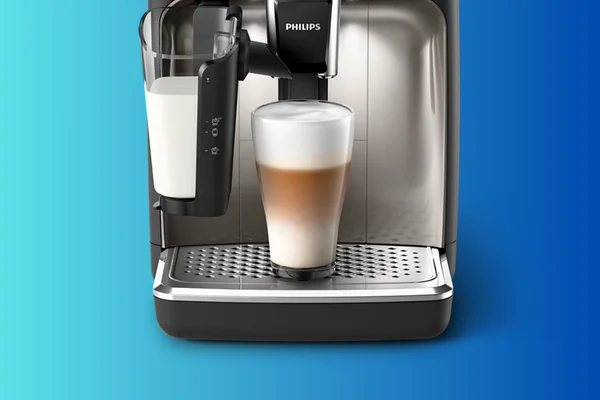
Water Filter System
Philips 4300 and 5400 are compatible with the AquaClean water filter. The first filter is included in the price and can make up to 5,000 cups of coffee with clean and pure water.
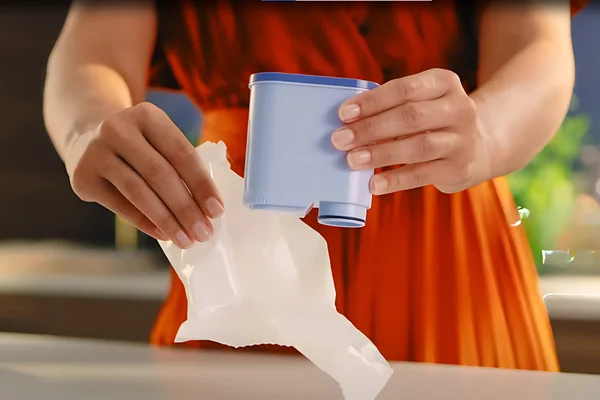
Apart from its health benefits, the AquaClean water filter protects your coffee maker from limescale buildup, preventing premature corrosion and damage. Its micro-porous filter absorbs calcium, magnesium, fluoride, and other impurities, like lead and iron, from the water, reducing its hardness and making it safe for human consumption.
Power Consumption
If you are under the illusion that because of its advanced settings and premium functions, the Philips 5400 will consume more power compared to the Philips 4300, then let us set the record straight. Philips 4300 and 5400 consume around 1,500 Watts of electricity to brew coffee. Moreover, both have an ‘eco’ setting or mode, which you can turn on to save energy.

So, if we do the math, running the Philips 5400 and 4300 for 2.5 hours each day (almost like making coffee all day!) means a total power consumption of 3.75 kW/h. The average cost of electricity in the USA for 1 kW/h is $0.1641 (16.41 cents). So, if the Philips coffee makers consume 3.75 kW/h each day, the cost of electricity per day will be $0.6154 (61.54 cents), and the monthly electricity bill will be $18.73.
Now, if you can handle that recurring expense, the Philips 4300 and 5400 are worth it. If not, plenty of other automatic coffee machines in the market consume between 700 and 1,200 Watts of electricity, reducing your utility bills.
Portability
When we first heard of the Philips 4300 and 5400’s functions and features, we thought they were bulky, commercial coffee machines, like Nescafe’s Ready Brew 100 and Brew 200 vending machines. But we were surprised when the handy package arrived, and we unboxed the espresso machines.
The Philips 4300 weighs around 16.53 lbs (7.5 kg), while the Philips 5400 weighs 17.64 lbs or 8.0 kg. The difference in weight is due to the addition of a LatteGo milk carafe in the Philips 5400.
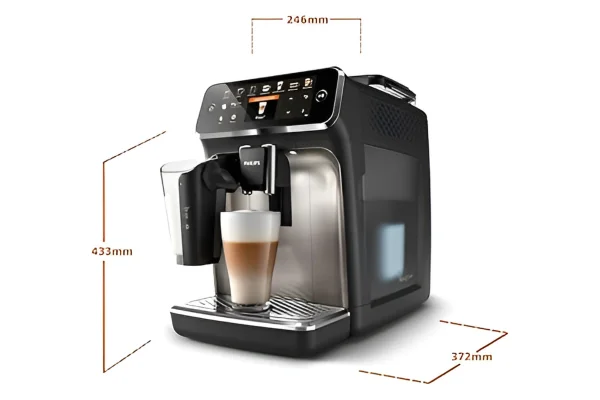
Price and Warranty – Philips 4300 vs 5400
Philips 4300 and 5400 are high-priced, fully automatic espresso machines. The retail price of the Philips 4300 is $999.99, and the product is available for purchase at online retailers like Walmart, Amazon, and Seattle Coffee Gear.
The good news is that if you cannot pay $1,000 upfront for your Philips 4300 (EP4321/54) espresso machine, retailers like Walmart and Seattle Coffee Gear allow you to purchase the product on 12, 18, or 24-month payment plans, starting as low as $52 per month.
A new and sealed Philips 5400 costs nearly $1,099.95. It can also be bought from retailers like Amazon, Walmart, and Seattle Coffee Gear for a one-off payment or month-to-month payments.
A 2-year manufacturer warranty is included with the Philips 5400 and 4300 espresso machines. However, it only applies to new products and not the refurbished ones. Seattle Coffee Gear customers get an additional 6-month warranty, during which they will handle all the repairs and replacements free of charge.
Better Reviews and Ratings – Philips 4300 or 5400?
Whether you opt for the Philips 4300 or 5400, both have an average customer rating of 4.4 out of 5 stars. On Philips’ official product page, Series 4300 ranks better with a 4.6-star rating. Out of 84 reviews, 90% recommend the product and say it is easy to use, clean, and makes great beverages even for picky coffee drinkers.
On the other hand, Philips 5400 tops the chart on Amazon with a 4.5-star rating. However, on its Philips page, the product has a 4.3-star rating and 270 reviews, in which 86% of consumers recommend purchasing 5400 (EP5447/94). While users like the product’s multiple settings, easy maintenance, and customization, they believe the coffee quality and temperature can be improved.
| Platform | Philips 4300 | Philips 5400 |
|---|---|---|
| Philips | 4.6 stars | 4.3 stars |
| Amazon | 4.1 stars | 4.5 stars |
| Seattle Coffee Gear | 4.5 stars | N/A |
Final Verdict – Philips 4300 or 5400?
Let’s be honest. Neither the Philips 4300 nor the 5400 is an ideal buy if you are short on cash or are looking for a basic espresso machine. Both include premium features at a premium price.
However, if we were to declare a clear winner between the Philips 4300 and 5400, we would go with 5400. For just $100 more, you get 7 additional specialty coffees, 2 more custom profiles, and a LatteGo milk system.
But we understand that a $1,000+ price tag might be discouraging for many. To them, we would recommend our Philips 1200 vs 2200 comparison blog. These older generation of Philips fully automatic espresso machines are under $500 and include the same core features as the ones hyped in newer models.
